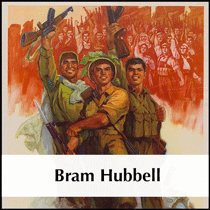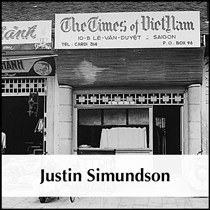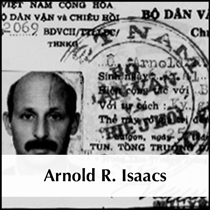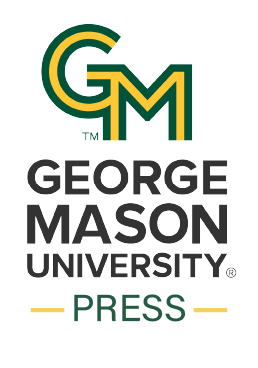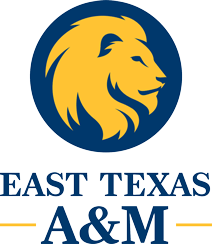Submissions Guide and Style Sheet for Articles and Book Reviews
Download Submissions Guide and Style Sheet for Articles
Download Book Review Guidelines
Scope and Content
World History Connected is an e-journal of world history devoted to research in, and also to the scholarship of teaching of world history. Its title reflects the journal’s commitment to assisting both scholars and practitioners to invigorate and expand the reach of research and teaching of world history. It editors include past presidents of the World History Association and award-winning history educators at all levels of instruction. It welcomes submissions of articles and book reviews on any subject germane to world history including (a) essays on the state of the field; (b) case studies, or topical overviews which cross regional boundaries to examine such issues as gender, technology, demography, social structure, or political legitimacy; and (c) the evaluation of curriculum and innovative instructional methodology. The journal also seeks peer reviewers and scholars to review recently published titles in the field of world history. The journal is open-sourced (free), staff and contributors are not compensated for their work, and it funded by individual contributions and organizations committed to advancing its goals. It accepts no paid advertising. Please direct questions about submissions to the Editor, Cynthis Ross at cynthia.ross@tamuc.edu.
Submission of Articles and Reviews
All submissions are subject to double-blind peer review. World History Connected reserves the right to decline to publish any submission.
All submissions must be prepared double spaced, with one-inch margins and subheads at the left-hand margins, with endnotes, a short biography of about 250 words, such as that appears on all published WHC articles, a mailing address, and phone number (a WhatsApp number is also acceptable). Length of submitted articles should be more than 3,000 words, with upper limitation as is appropriate (usually not more than 10,000 words). All articles need be submitted in Word .doc or.docx format. We prefer images as JPG. For more specific information on style, see “Citations and References” below. The journal is published 3 times a year: in Winter, Summer, and Fall. please click on Make a Submission to complete contributor information and upload an abstract, draft, or completed essay to be sent to the Editor, Cynthia Ross.
Book review correspondence should be directed to the journal’s Book Review Editor, Gina G. Bennett at GBennett@coker.edu. A list of Books Available for Review can be found here: https://journals.gmu.edu/index.php/whc/books-available-for-review
Submissions are accepted at any time.
Individual submissions may appear in the Articles section of the journal or, with the author’s permission, may be integrated into Forums, a regular feature in which related studies on a common world history process or theme are organized and introduced by the editor. Forums are usually preceded by Calls for Papers on the subject, and their deadlines for submission are included in the Call.
Alternatively, Forums are curated by a Guest editor, who may select edit, and arrange for the peer review of Forum articles they have chosen or obtained through a Call for Papers. Past Guest editors have included former Presidents of the World History Association, the current WHA President, Laura J. Mitchell, and a past President of the American Historical Association, Patrick Manning. Those interested in serving as Guest editor should contact the Editor, Cynthia Ross, at cynthia.ross@tamuc.edu.
General Tone of Articles
World History Connected puts a premium on engaging writing. The journal wants articles that readers will enjoy enough to pass on to colleagues and to students. We want prose that is lively as well as informative. The journal’s peer reviewers are as adept at helping to enliven traditional academic journal writing (and chapters of theses and dissertations) as they are at encouraging professionalism in essays that may require it.
Traditional Research Articles
Any submission should address recent scholarship on world historical process in play and/or why those interested in world history would find it of value. If a case study, the connection between it and parallel studies should be made clear. Introductory remarks should make explicit what it intends to illustrate/demonstrate and then revisit them in the conclusion. This is particularly important as among the almost two million readers of the journal are scholars whose first language is not English and such clarity will maximize their understanding of its intent. For an engaging example, see Laura J. Mitchell, “Illustrating Empire: A Soldier’s Life and Trans-imperial Encounters in the Eighteenth Century,” World History Connected 14, No. 1 (February 2017).
Such clarity of purpose may also attract the interest of busy scholar-teachers at any level of instruction who would also appreciate a reference to how they might make use of this scholarship as practitioners. Given one of the aims of the journal set out at the beginning of this style sheet—the need to connect those engaged in the research and teaching of world history—authors of traditional research articles are encouraged to provide in the introductory/closing sentences how that can be done or, alternatively, mention can be made an Appendix or Appendices (easily inserted in any article) of active learning applications. This is by no means required. The first two articles in the Forum on Premodern History (World History Connected 17, No. 2 June 2020) were accepted without reference to classrooms applications. However, when it was merely suggested that this connection would be welcome, these authors added both of these elements to their articles, thus fulfilling the World History Association’s dual mandate to advance both research and teaching in this field.
Scholarship of Teaching
The journal seeks articles that open with an introduction possessing the same clarity of intent expected of one based upon archival research noted above. All introductions should make explicit what it intends to illustrate/demonstrate and then revisits them in the conclusion. The connection between the article and parallel studies should be made clear before linking it to detailed descriptions of lessons and curricula. For example, if it advocates a new or a revision of an active learning activity, how does it fit within/relate existing methodology or practice?
It should be noted that submissions from teachers new to publishing will be given every assistance to meet such requirements: literally scores of teachers have published their first article in this journal with the help of its peer reviewers and editors (we have four editors devoted to this process), all of whom are eager to help develop your talents.
Articles in this category often report on/assess innovative classroom strategies. The journal particularly values articles which offer samples of student work to further discussion of a lesson’s successes (and, yes, its limits) or to support claims about the way students learn history. We urge authors to discuss in some depth the way that particular ideas are translated into action in the classroom. A useful example of this is Rajeshwari Dutt’s article, “Art in the Teaching of World History in the STEM Classroom: India’s Institutes of Technology as a Case Study,” which was published in World History Connected 16, No. 3 (October 2019).
Other subjects to consider—Curriculum and assessment: how can teachers design curriculum and assessment to integrate current scholarship with effective teaching practice? Student learning and construction of knowledge: what can teachers do to improve student learning? Point of View: Teachers and scholars often differ on central questions of importance to world history education. Also, how can students best learn? How can classrooms most effectively deal with controversial issues? To what extent should world history teachers welcome standardized exams? What is the ideal balance between teaching skills and teaching content?
Author's Brief Biography
All prospective articles must contain a brief biography inserted at the end of the main text and above the “Notes” subhead. The biography should include the author’s name, institutional and departmental affiliations, recent publications, and e-mail address. Two Examples:
Stephen Crane is an Associate Professor of History at Kistnayo University in Lawrence, Kansas, specializing in the cultural and religious history of West Africa. He teaches World History survey courses, as well as graduate and undergraduate courses in African history. His most recent publication is, “Cameroon in the Films of Eddie Murphy,” Journal of Contemporary Africa 10, no. 3 (March 2020): 275–76, 279, at https://doi.org/1019010000. He can be reached at cranes@Kistnayo.edu.
Jane Doe has taught history for fifteen years at Eisenhower High School in Stevenson, British Columbia. She has served on the Teaching Committee of the World History Association (2012–2014) and regularly contributes papers at meetings of the Western Canadian World History Association. She recently published “Juan Perón: A Teaching Unit” for the Martín Fierro Argentine Studies Center. Jane Doe can be reached at jdoe48@ehs.edu.ca.
Compensation
Though our authors deserve more than our enthusiasm and gratitude, we cannot offer any monetary compensation for articles published with World History Connected.
Multiple Submissions
We strongly discourage multiple or simultaneous submissions. That said, we recognize that some articles, particularly those dealing with contemporary events, may go stale if they have to wait too long for a publisher. Also, an author may seek to place a work with a publication whose readership will not overlap with that of World History Connected. We ask that authors let us know in advance of such extenuating circumstances.
Publication Process
Authors should prepare manuscripts according to the guidelines below. When in doubt, the final arbiter of style is the Chicago Manual of Style, 17th edition. Submit completed manuscripts to the editors. Upon passing through the peer review process, articles are forwarded to the Press, after which authors are given a PDF galley proof to check the article for any errors. At this point only changes of the most minor kind may be made in the text. Accordingly, authors may be given only a short time to review their article that it may make its publication deadline.
Text and Illustrations
Images are recommended to serve as thumbnail pictures on the right had side of the Webpage that supplements the Table of Contents. Readers who find the image interesting can click on the image and go directly to the article.
Permissions
Authors must obtain written permission to quote from listserv postings, email, and other works which (while disseminated to a broad audiences) were not necessarily intended for formal publication. Authors who have questions about copyright and other permissions should consult the editor.
Citation and Reference Style
Transliteration: Authors should inform the editors if any term needs to remain in its original script. Otherwise, all terms and names not in Roman script must be transliterated. Follow the guidelines in The Chicago Manual of Style, 17th ed. For all languages which use a Roman script, authors should indicate all diacritical marks. Contact the editors for assistance using a word processing program to add these marks.
Gender-Neutral Language: Please follow an editorial preference for gender-neutral language.
Editing quotations: Authors should use brackets and ellipses to indicate alteration of quotations. Authors may modernize spelling or punctuation if necessary to avoid misunderstanding so long as they note that such changes have been made. Authors should not change the order or meaning of quotations.
Ellipses: Authors should in all instances denote elisions with three dots with one space before and after each dot.
Dates: For specific dates, follow this format: July 5, 2003. Where necessary, we prefer BCE (before common era) and CE (common era) (note that these abbreviations are in large caps). Authors who use other dating systems should provide the common era equivalents in parentheses. In a documentary source quotation (prepared for a document-based question, for example), indicate the common era equivalent in text introducing the document or indicate the common era date in brackets: “On the 9th of Rabi II 655 [April 26, 1257], Helegu Khan arrived in Dinawar on his way to Baghdad.”
Offices and Titles. Spell out titles (i.e., Vice President, not V.P.). The only exception: St. for Saint. The United States rather than “US.”
En and Em Dashes: World History Connected prefers the use of single hyphens for en dashes, and double hyphens for em dashes. For hyphenated asides—such as this one—please use double hyphens without spaces between the words that immediately precede and follow the hyphens. Please note that many word processing programs, in their default settings, will automatically format double hyphens as em dashes. Authors should avoid such formatting by adjusting their default settings or by retyping double hyphens.
Numbers: As a general rule, whole numbers less than one hundred should be spelled out. See Chicago Manual §9 for exceptions.
Serial Commas: Please use commas to separate elements in a series. If a conjunction precedes the final element in the series, please use a comma before the conjunction. For further guidance in the use of commas, please consult the Chicago Manual §6.
Hyphenation: For the hyphenation of compound words and phrases, please see the Chicago Manual §7.89.
Capitalization: For the capitalization of names and terms, please consult the Chicago Manual of Style §7. Also, please note that certain words associated with the Internet, the World Wide Web, and other technological resources have not yet obtained uniform usage. World History Connected adheres to the following spellings and capitalization:
dot.com; Web; e-mail; Web page; Internet; Webmaster; home page; Webzine; Listserv; Website; online; World Wide Web
Examples of Citations [Endnotes Only] And References
Standard Note Style: Citations, explanations, and acknowledgements appear in sequentially EMBEDDED numbered endnotes. Authors do not need to provide bibliographies but may add “suggestions for further reading” or “resources.” The Chicago Manual of Style, 17th ed., is the final arbiter of most questions of style. We address the journal’s preferred version of that style below. In preparing this list, the editorial staff has relied extensively on the style sheet maintained by the e-journal Common-Place, whose permission we gratefully acknowledge.
Websites
Citation from a newspaper or other print media:
Kenneth Chang, “Astronauts Dock with Space Station,” New York Times, accessed February 1, 2020, https://www.nytimes.com/2020/05/31/science/spacex-astronauts-arrival.html.
Citation to a source without an author:
Cable News Network, “John Beresford Tipton inaugurated as President,” CNN.com, accessed February 1, 2021, http://www.cnn.com/POLITICS/01/21/obama_inaugurated/index.html.
Citation to a source with two authors:
John Smith and Jane Doe, “John Beresford Tipton inaugurated as President,” CNN.com, accessed February 1, 2020, http://www.cnn.com/POLITICS/01/21/obama_inaugurated/index.html.
Books: One Author
Neil L. Jamieson, Understanding Vietnam (Berkeley and Los Angeles: University of California Press, 1993), 203–207. Second citation: Jamieson, Understanding Vietnam, 122.
Books: Two Authors
Michael Shermer and Alex Grobman, Denying History: Who Says the Holocaust Never Happened and Why Do They Say It? (Berkeley and Los Angeles: University of California Press, 2000), 155. Second citation: Shermer and Grobman, Denying History, 23.
Article in a Collection
R. I. Moore, “The Birth of Europe as a Eurasian Phenomenon,” in Victor Lieberman, ed., Beyond Binary Histories: Re-imagining Eurasia to c. 1830 (Ann Arbor: University of Michigan Press, 1997), 143. Second citation: Moore, “The Birth of Europe,” 147–149.
Journal: One Author
Jack A. Goldstone, “Efflorescences and Economic Growth in World History: Rethinking the ‘Rise of the West’ and the Industrial Revolution,” Journal of World History 13, no. 2 (Fall 2002): 323. Second citation: Goldstone, “Efflorescences,” 324.
Journal: Two Authors
Sean Brawley and Chris Dixon, “Jim Crow Downunder? African-American Encounters with White Australia, 1942–1945,” Pacific Historical Review 71, no. 4 (November 2002): 611. Second citation: Brawley and Dixon, “Jim Crow Downunder?” 77–78.
Magazine
John Dower, “The Other Japanese Occupation,” The Nation, July 7, 2003, 11. Second citation: Dower, “The Other Japanese Occupation,” 13.
Newspaper Article [From Printed Source]: News
“Bush Says U.S. Won’t Waver in Iraq Mission,” Los Angeles Times, July 2, 2003, A1. Second citation: “Bush Says U.S. Won’t Waver,” A1.
Newspaper Article [From Printed Source]: Opinion
Leon Hadar, “U.S. Empire? Let’s Get Real,” Los Angeles Times, July 2, 2003, B15. Second citation: Hadar, “U.S. Empire?” B15.
Book Reviews
Please take some time to familiarize yourself with the following guidelines before submitting your review.
The review should be double-spaced with 1” margins, using Times New Roman font, 12 point. Each review should begin with a title heading that provides the author, title, city of publication, publisher, date, number of pages, price, and binding. As an example, J. R. McNeill and William McNeill, The Human Web: A Bird’s Eye View of World History. New York: W. W. Norton, 2003. Pp. xviii + 350. $27.95 (cloth).
Give your name, affiliation, a brief biographical statement (100 words or less), and preferred email address at the end of the review.
WHC does not have a strict word limit for book reviews. The length of the review will depend on the nature of the book. Most of our reviews average 1000 words with edited volumes approaching 1500 words. If the changes made by our Book Review Editor are extensive, the copyedited version will be returned via email for review. Galley proofs will be sent to all book review authors prior to publication.
Reviews should include a brief summary of the content of the work as well as its significance to the literature on the subject. Please keep in mind that the WHC audience includes instructors at the high school and college levels as well as readers abroad. Please be sure the review speaks to an audience of non-experts and gives readers a sense of how they might use the reviewed title as a teaching resource.
To be effective, reviews should go beyond description of content to evaluate the strengths and weaknesses of the work, paying attention to the use of sources, methodology, and organization. Ideally, the review will place the work within a broader context, highlighting for the audience what aspects of the title are worth the attention of scholars. Reviewers should express criticism in courteous and constructive terms.
Only direct quotes from the text of the reviewed book require page numbers in parentheses. For example, “Despite the intentions of the editor to have each author ‘write for the uninitiated,’ not every contribution succeeds (12).” Other books mentioned, quoted or not, should include complete bibliographic information. For example, “In The Fate of Africa, Martin Meredith proclaims that ‘In much of Africa . . . the colonial imprint was barely noticeable’ (The Fate of Africa: A History of Fifty Years of Independence, New York: Public Affairs, 2005, 5).”
If you have any questions, please contact Cynthia Ross at Cynthia.ross@tamuc.edu


